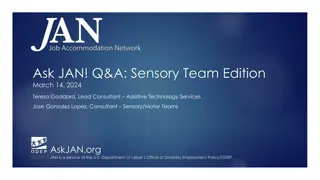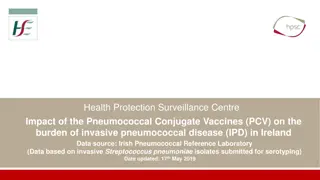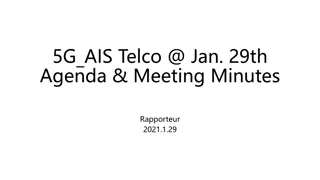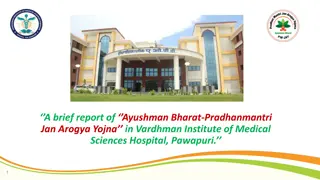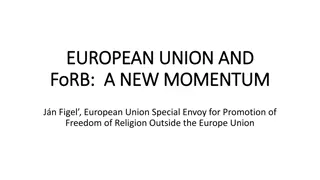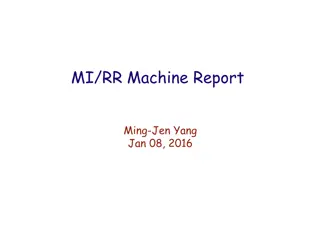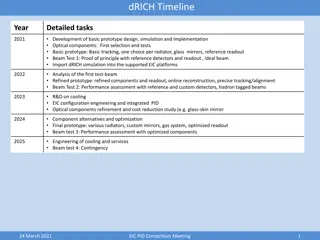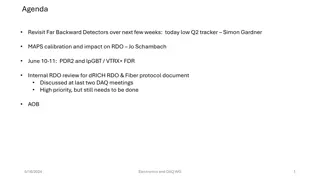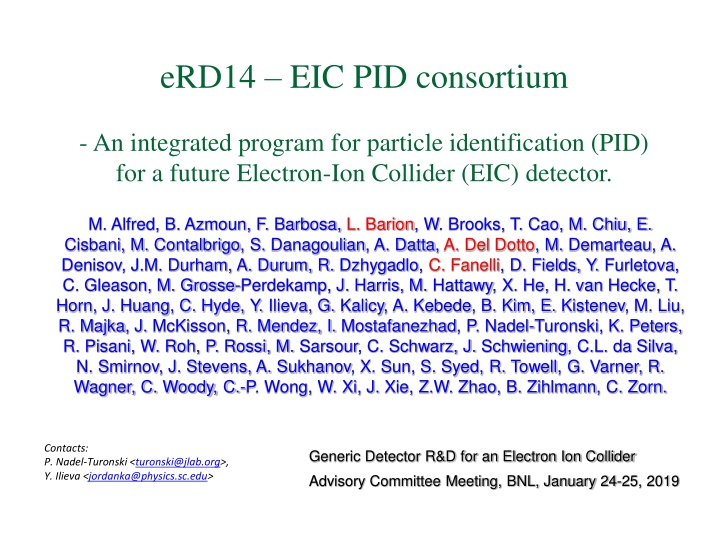
Integrated Program for Particle Identification at Future Electron-Ion Collider
An overview of the eRD14.EIC.PID consortium's work on developing a dual-radiator RICH system for hadron and electron identification at the Electron-Ion Collider (EIC) detector. Progress updates, prototype designs, performance optimizations, and future plans are discussed.
Download Presentation

Please find below an Image/Link to download the presentation.
The content on the website is provided AS IS for your information and personal use only. It may not be sold, licensed, or shared on other websites without obtaining consent from the author. If you encounter any issues during the download, it is possible that the publisher has removed the file from their server.
You are allowed to download the files provided on this website for personal or commercial use, subject to the condition that they are used lawfully. All files are the property of their respective owners.
The content on the website is provided AS IS for your information and personal use only. It may not be sold, licensed, or shared on other websites without obtaining consent from the author.
E N D
Presentation Transcript
eRD14 EIC PID consortium - An integrated program for particle identification (PID) for a future Electron-Ion Collider (EIC) detector. M. Alfred, B. Azmoun, F. Barbosa, L. Barion, W. Brooks, T. Cao, M. Chiu, E. Cisbani, M. Contalbrigo, S. Danagoulian, A. Datta, A. Del Dotto, M. Demarteau, A. Denisov, J.M. Durham, A. Durum, R. Dzhygadlo, C. Fanelli, D. Fields, Y. Furletova, C. Gleason, M. Grosse-Perdekamp, J. Harris, M. Hattawy, X. He, H. van Hecke, T. Horn, J. Huang, C. Hyde, Y. Ilieva, G. Kalicy, A. Kebede, B. Kim, E. Kistenev, M. Liu, R. Majka, J. McKisson, R. Mendez, I. Mostafanezhad, P. Nadel-Turonski, K. Peters, R. Pisani, W. Roh, P. Rossi, M. Sarsour, C. Schwarz, J. Schwiening, C.L. da Silva, N. Smirnov, J. Stevens, A. Sukhanov, X. Sun, S. Syed, R. Towell, G. Varner, R. Wagner, C. Woody, C.-P. Wong, W. Xi, J. Xie, Z.W. Zhao, B. Zihlmann, C. Zorn. Contacts: P. Nadel-Turonski <turonski@jlab.org>, Y. Ilieva <jordanka@physics.sc.edu> Generic Detector R&D for an Electron Ion Collider Advisory Committee Meeting, BNL, January 24-25, 2019
Dual-radiator RICH (dRICH) Goal: Provide hadron identification ( /K/p) from 3 to 50 GeV/c (3 sigma) and electron identification (e/ ) up to 15 GeV/c, in the forward ion-side endcap of the EIC detector, covering polar angles up to ~25 deg. Progress in 2nd half of 2019: Prototyping Consolidated prototype design Started procurement of prototype components Finalized Bayesian Optimization Method for detector design, tested on dRICH Detailed analysis of the event-based reconstruction algorithm performance 2
dRICH in EIC - baseline model Spherical Mirror Gas Aerogel Hits on detector Photon impact on mirror(s) Available: - detailed simulation model including photon scattering in aerogel and 3 T central magnetic field - event-based reconstruction Sensor Surface Demand excellent performance from aerogel! Radiators: Aerogel (4 cm, n(400nm) 1.02) + 3 mm acrylic filter, Gas (1.6 m, nC2F6 1.0008) 6 Identical Open Sectors (Petals): Large Focusing Mirror with R 2.9 m Optical sensor elements: 4500 cm2/sector, 3 mm pixel size, UV sensitive, out of charged particles acceptance Advantages: - Full momentum, continuous coverage - Relatively simple geometry/optics - Expected to be Cost Effective (respect to 2 x detectors solution) 3
dRICH Performance Optimization Combine detailed MonteCarlo simulations with Bayesian Approach to efficienty maximize a proper Figure of Merit ( -K Cherenkov angles separation in critical phase spaces regions, e.g. aerogel-gas transitions, high momentum limit ) Current implementation uses 8 independent parameters (can be extended easily) The method provides optimized performances and hints on relevance of different detector features It can be ported to any detector development (or combination of detectors) where detailed MonteCarlo exists arXiv:1911.05797 submitted to JINST 4
dRICH prototype (a new detector ) Design in an advanced stage, mechanical details being finalized Standard Vacuum Technologies to optimize gas handling Two tuneable mirrors system for using the same detector Common (limited) sensitive surface for both aerogel and gas photons Detector and aerogel box isolated from the gas tank 5
FY20 outlook Activity T1 T2 T3 T4 Prototype Component procurement Prototype construction Prototype simulation analysis Prototype lab test Aerogel-gas long term test Sensor characterization (mRICH + dRICH) Electronics test and integration (mRICH + dRICH) Contract awarded for mechanics and aerogel, funds secured for mirror system and at least the cheaper freon gas. Sensor characterization campaign initiated. Important components (electronics and sensors) of the dRICH prototype are shared with the mRICH development CLAS12 infrastructures available in Ferrara/JLab is used for aerogel-gas studies and photon sensors characterization 6


